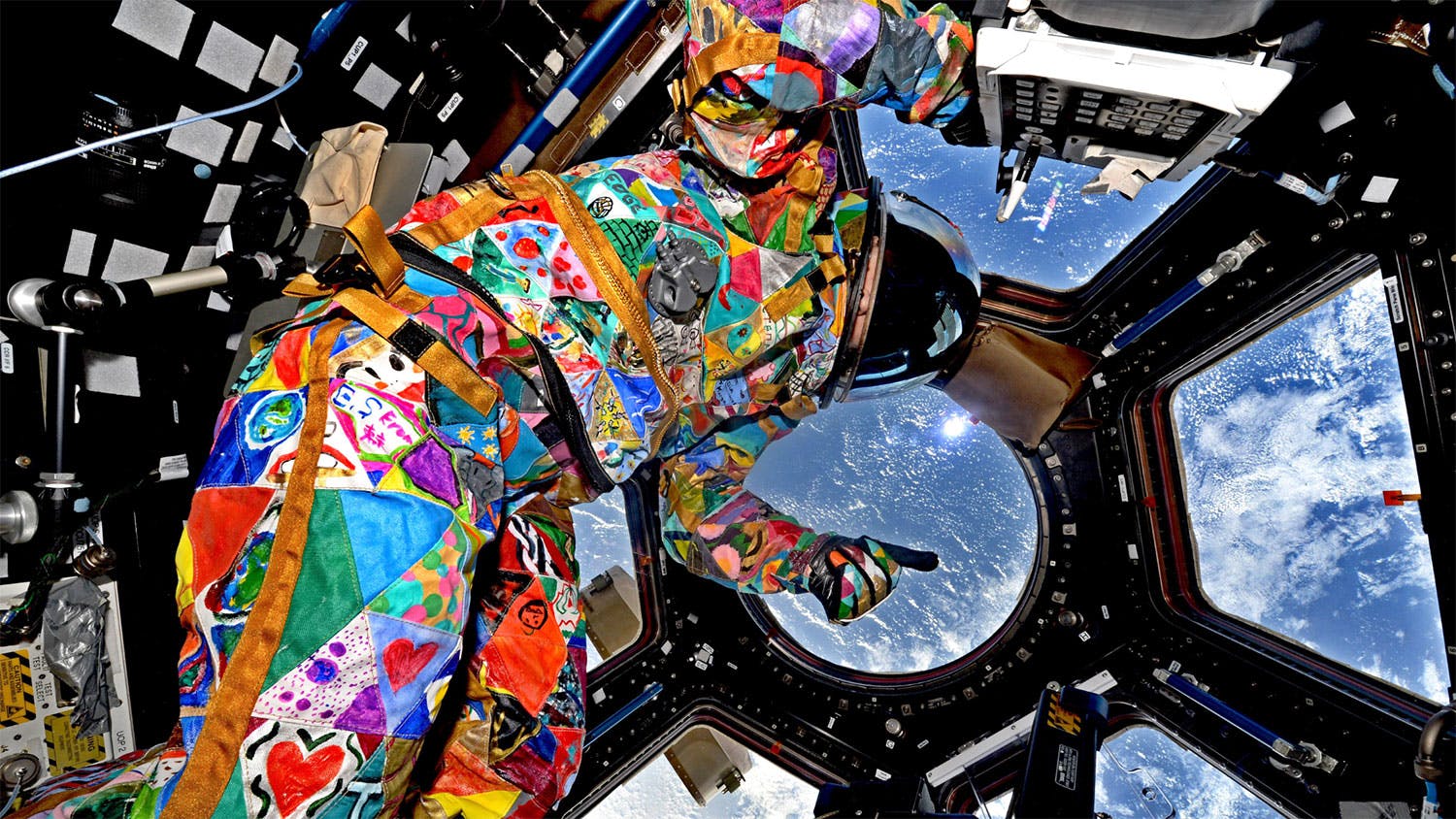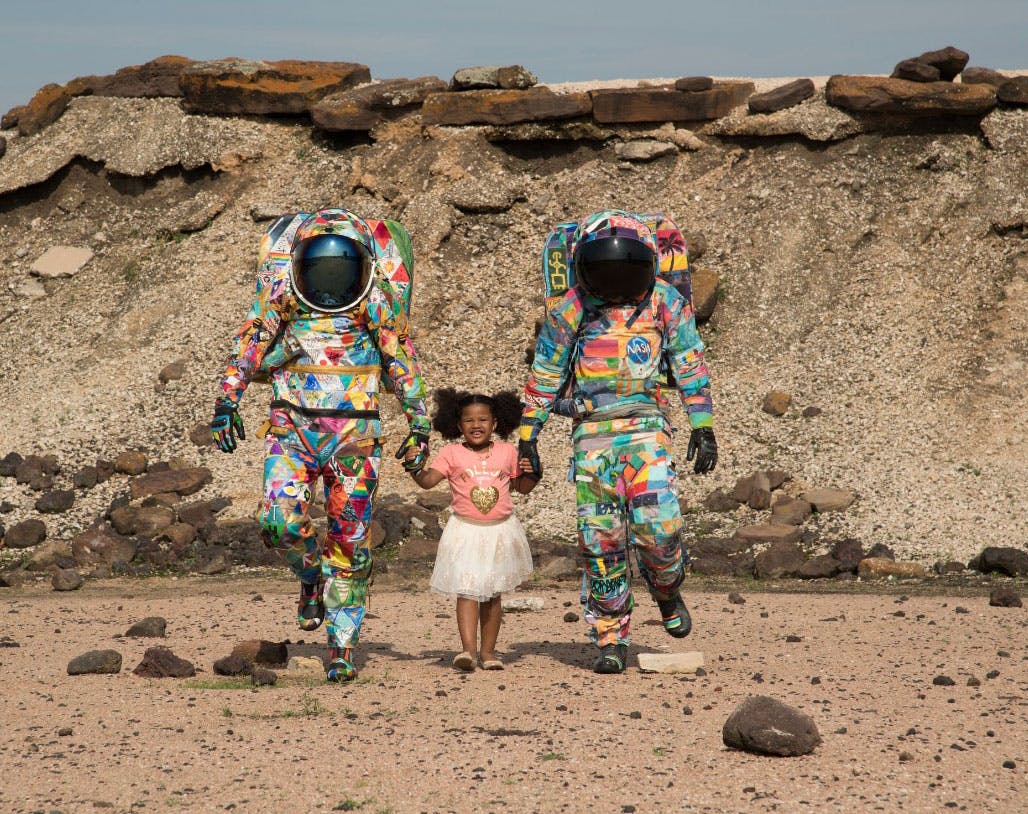
STEM/STEAM Day Q&A with former NASA astronaut and artist Nicole Stott
Art and science are a natural passion for Nicole Stott, a former NASA astronaut and founder of the Space For Art Foundation.
On July 14, 2021, Club for the Future selected 19 space-based charities to each to receive a $1 million grant to inspire future generations in STEM careers and invent the future of life in space. Among those 19 charities is Nicole Stott’s Space For Art Foundation. Its mission is to ignite a curiosity for STEAM by giving children at hospitals and refugee centers the opportunity to work on large-scale, space-themed projects.
Club for the Future’s Josef Reinke was fortunate to spend time with Nicole recently to discuss the importance of infusing the arts into STEM and uniquely inspiring the next generation.

Josef Reinke: You are truly someone who embraces all aspects of STEM and the arts. What was your first artistic activity as a NASA astronaut in space?
Nicole Stott: I would consider looking out the window to be one of those activities where you thought you knew what to expect at first—but then you realize, “oh my gosh, we live on a planet!” That's a compelling thing. To be looking at the Earth in a whole new way—and to be presented with it—was honestly like a work of art. All of the glowing, beautiful colors against the darkest and clearest black I've ever seen. To me, looking out the window was probably the first creative thing I did. I certainly think that became the inspiration for any other artistic activities I did while in orbit, whether photography or painting in space.
Have you always looked at science through an artistic lens?
I've always appreciated the creative side of science and the whole goal to solve complex problems. I've found that the best engineers I know tend to also have something creative going on in their lives. Whether that's traditionally painting or writing poetry, or even building houses or working on cars, those are creative outlets that come back into the technical work we do. I have to believe that anybody who looks out the window of a spaceship sees a work of art below them, too.
I can't imagine how the colors alone inspired you while in orbit. What was the first thing you painted in space?
While in space, I painted Los Roques, the little chain of islands on the northern coast of Venezuela. While looking at them, I thought to myself that it looked like somebody had reached down with a big paintbrush and painted a wave on the ocean. I knew right away I was going to paint them and then created my watercolor art piece, “The Wave.”
Do you believe that the basis of being an engineer incorporates a lot of creative problem-solving?
Yes, I think it all comes together nicely and I'm thankful for adding the “A” to STEAM. As I’ve watched my 19-year-old son go through school, I’ve noticed there’s always a push to get our kids interested in science, technology, engineering, and math. In my opinion, this promotion of STEM is almost at the expense of the arts and humanities, as well as social studies classes. All of these classes were embedded in the way I learned at school. So, I'm thankful there's the arts in STEM that is making it STEAM. By allowing our kids to use their whole left and right brain, we are developing real problem solvers.
You've been such an advocate for using technology in an artistic way, as well. What are your thoughts on that unique combination?
Yes. Look at NASA, the recent Blue Origin flights, and the other space activities happening now—you’re able to become a part of this wonderful world focused on space exploration and how our involvement in space brings improvements for all of us back on Earth. I believe we have to do that creatively. While looking at Club for the Future and STEAM, I think the love for science, space, and art is all coming together and it will be a blend forever.
At Club for the Future, we admire how you incorporate art as therapy with your Space For Art Foundation. Have you always used art as that sort of outlet? Or is that something you adopted along the way and now share with others?
I have always used art that way, maybe not even knowing it was therapy. Art is almost like meditation where we can transcend and become absorbed in something that's very positive for humanity. That is what art and building creations has always meant for me. I believe that is why I feel like I've found my place with the work that we're doing at the Space For Art Foundation. It is a pleasure to also bring children from around the world to this mix, as well. Through the inspiration of space exploration and the creative process of art, I believe we truly emulate our motto, “uniting a planetary community of children through the awe and wonder of space exploration and the healing power of art.”
It is compelling to watch children sit up straighter, feel stronger, and talk about their futures because of our mission. By bringing together their art into these art spacesuits and other projects we do at Space For Art, you watch them also understand they're Earthlings, too. Suddenly, children get this whole idea that we’re all Earthlings living on a planet. My hope is that they carry this philosophy with them throughout their lives in whatever career they may choose—and maybe go into space, as well.
--
Keep an eye on Club for the Future’s website and social media for more blogs with our Club for the Future partners.
Share
Latest Posts
 Oct 2, 2025News
Oct 2, 2025NewsDestination space: EverCurious Space and Club for the Future unite to bring space to life for students across the globe
EverCurious Space LLC and Blue Origin’s Club for the Future have partnered up to help break down barriers to accessing space.
 Sep 16, 2025News
Sep 16, 2025NewsS.T.E.A.M. Race to Space Reading Challenge Partners with Blue Origin’s Club for the Future to Inspire the Next Generation of Space Explorers
The S.T.E.A.M. Race to Space Reading Challenge is thrilled to announce an exciting new partnership with Blue Origin’s Club for the Future.
 Jul 25, 2025News
Jul 25, 2025NewsUNIQLO Announces Four New Designs for PEACE FOR ALL Charity T-Shirt Project
Global apparel retailer UNIQLO announces the worldwide release of four new designs for its ongoing PEACE FOR ALL charity T-shirt project.
